



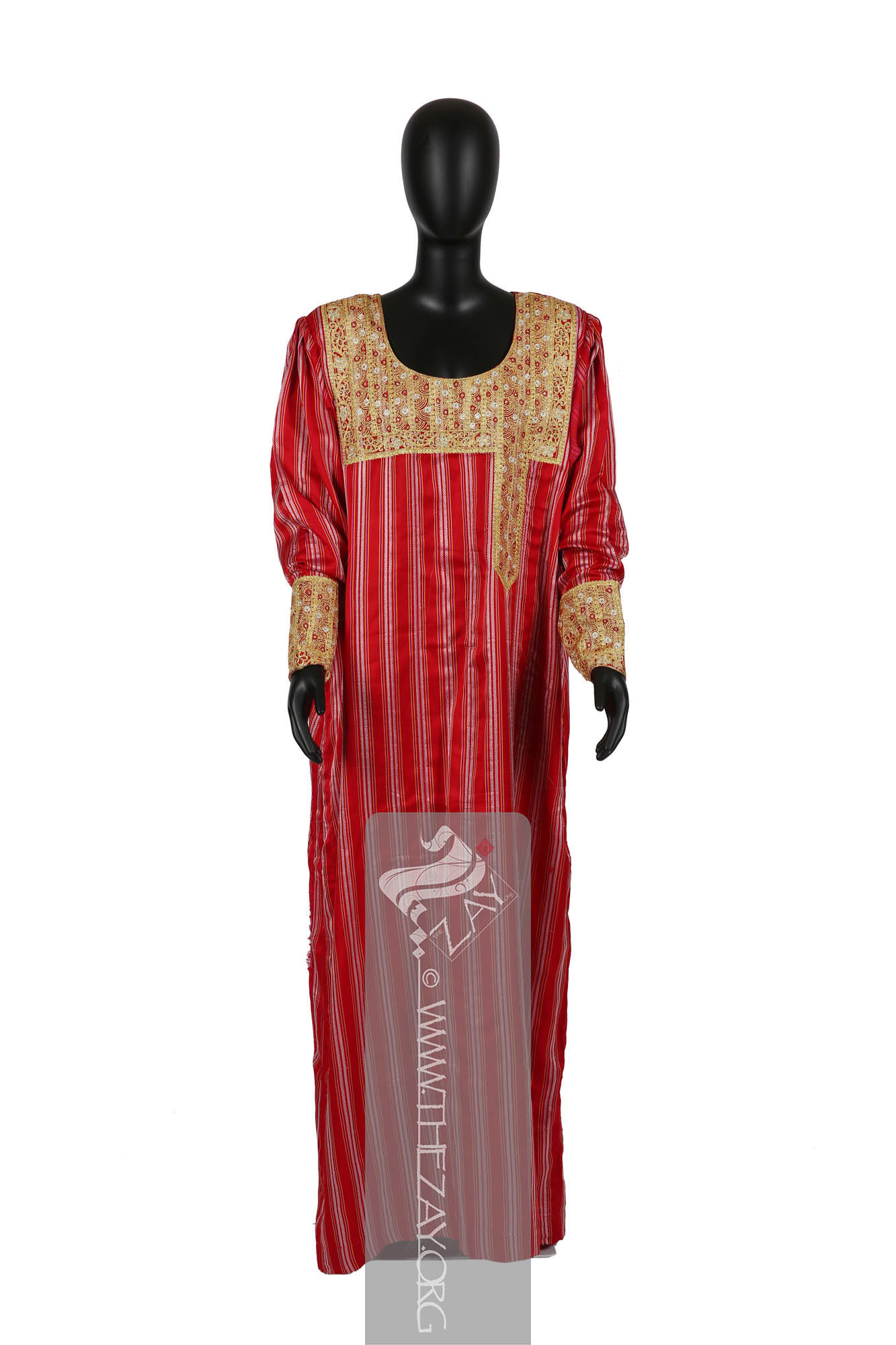
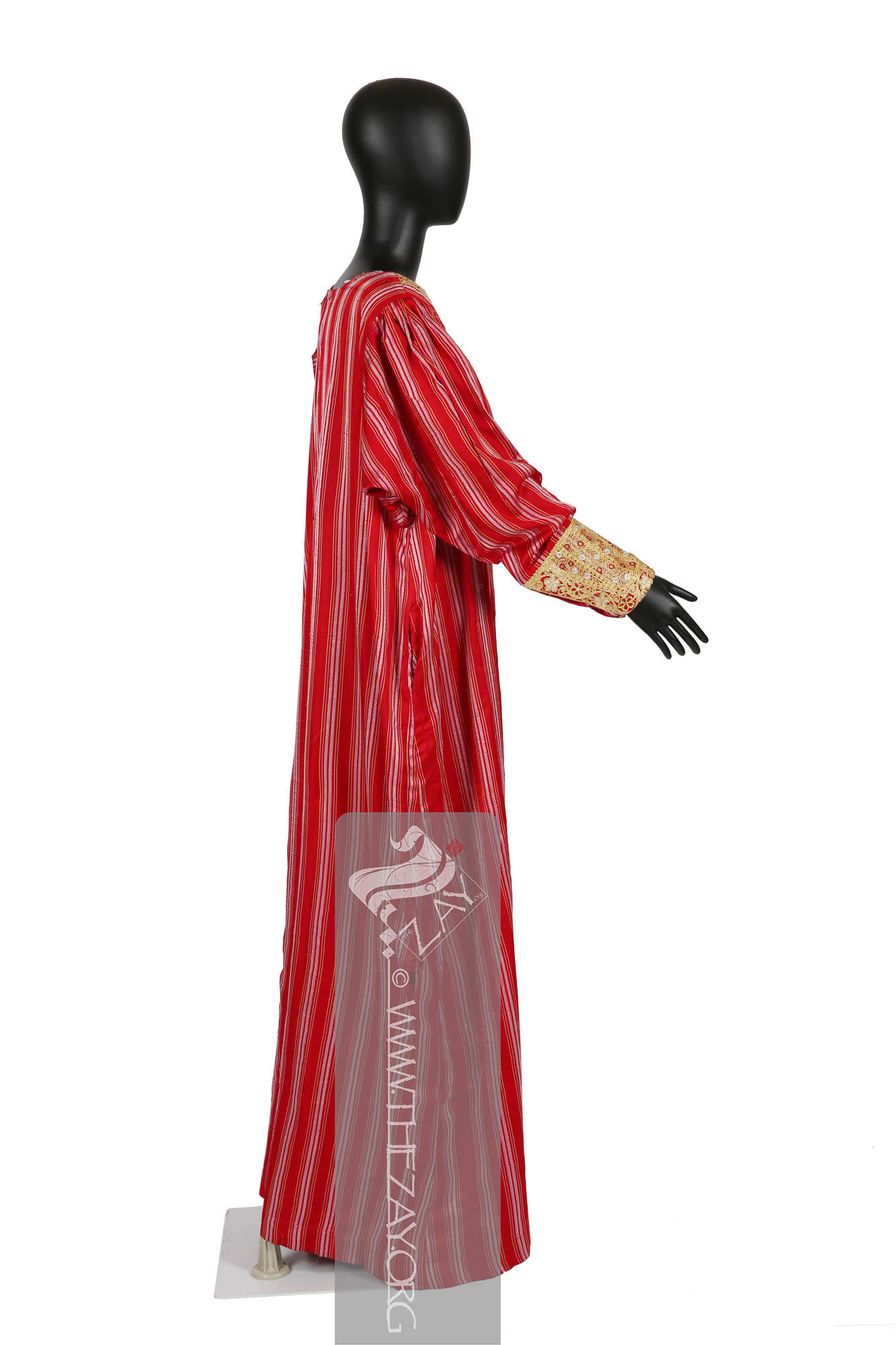
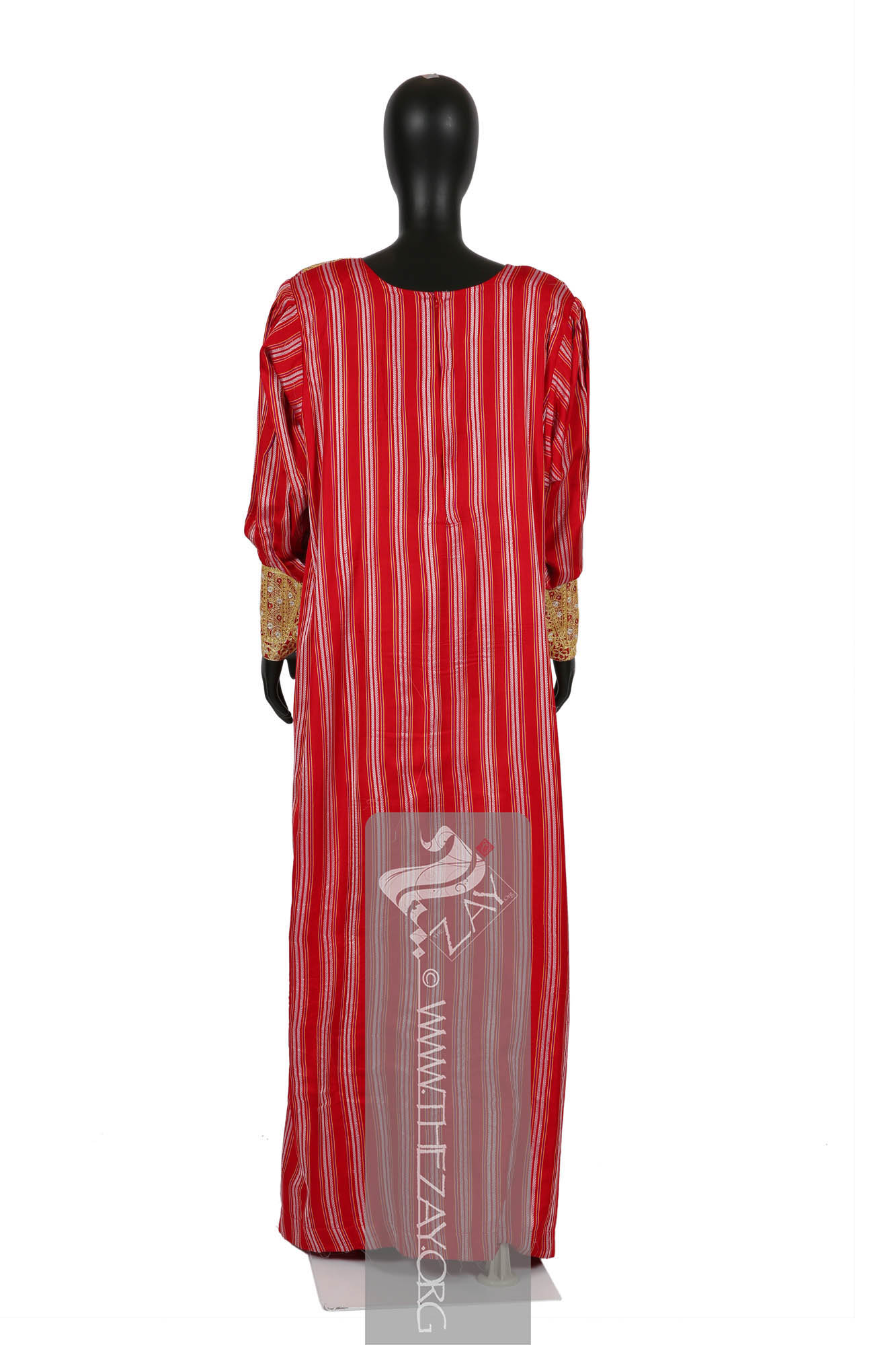
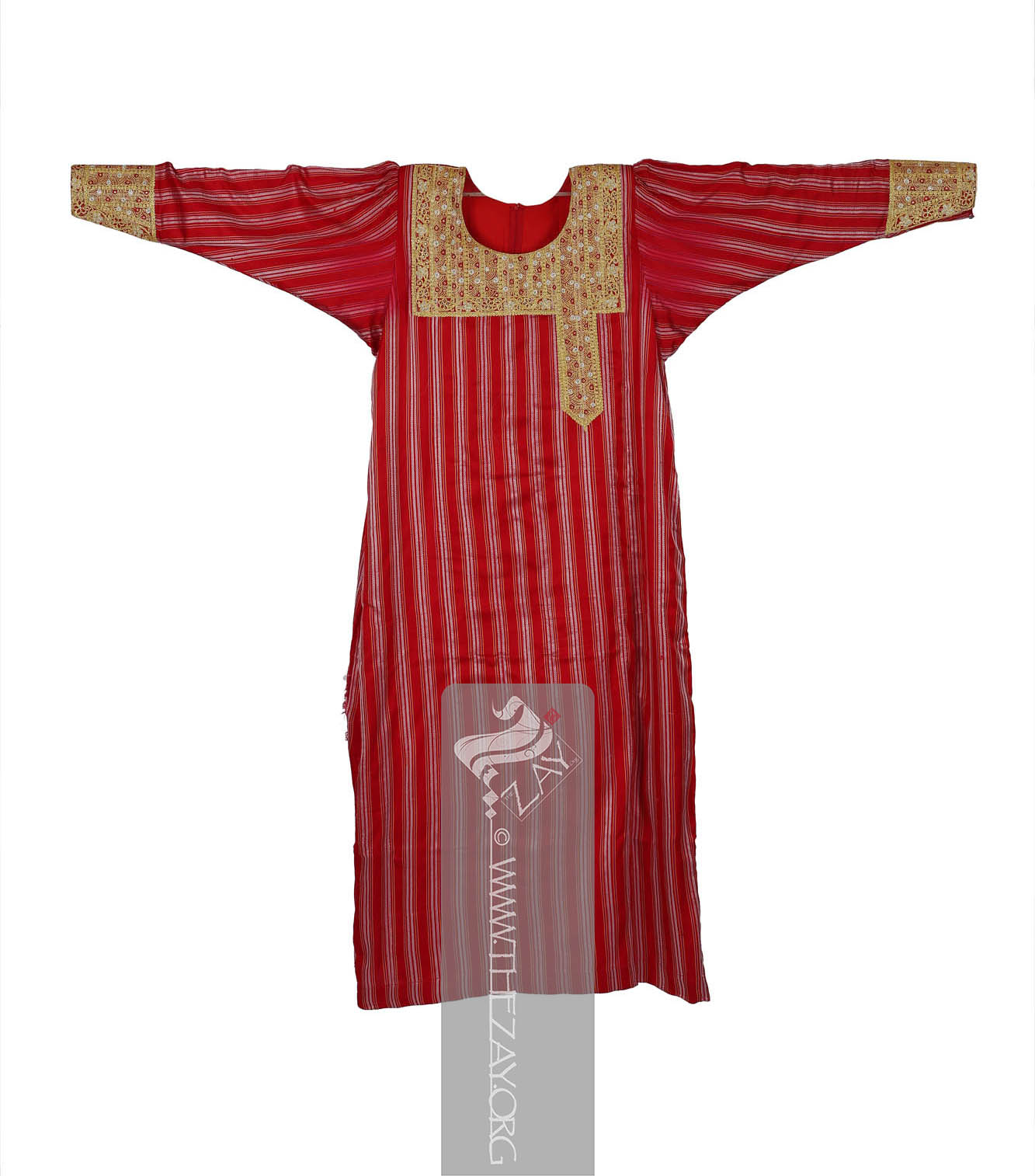
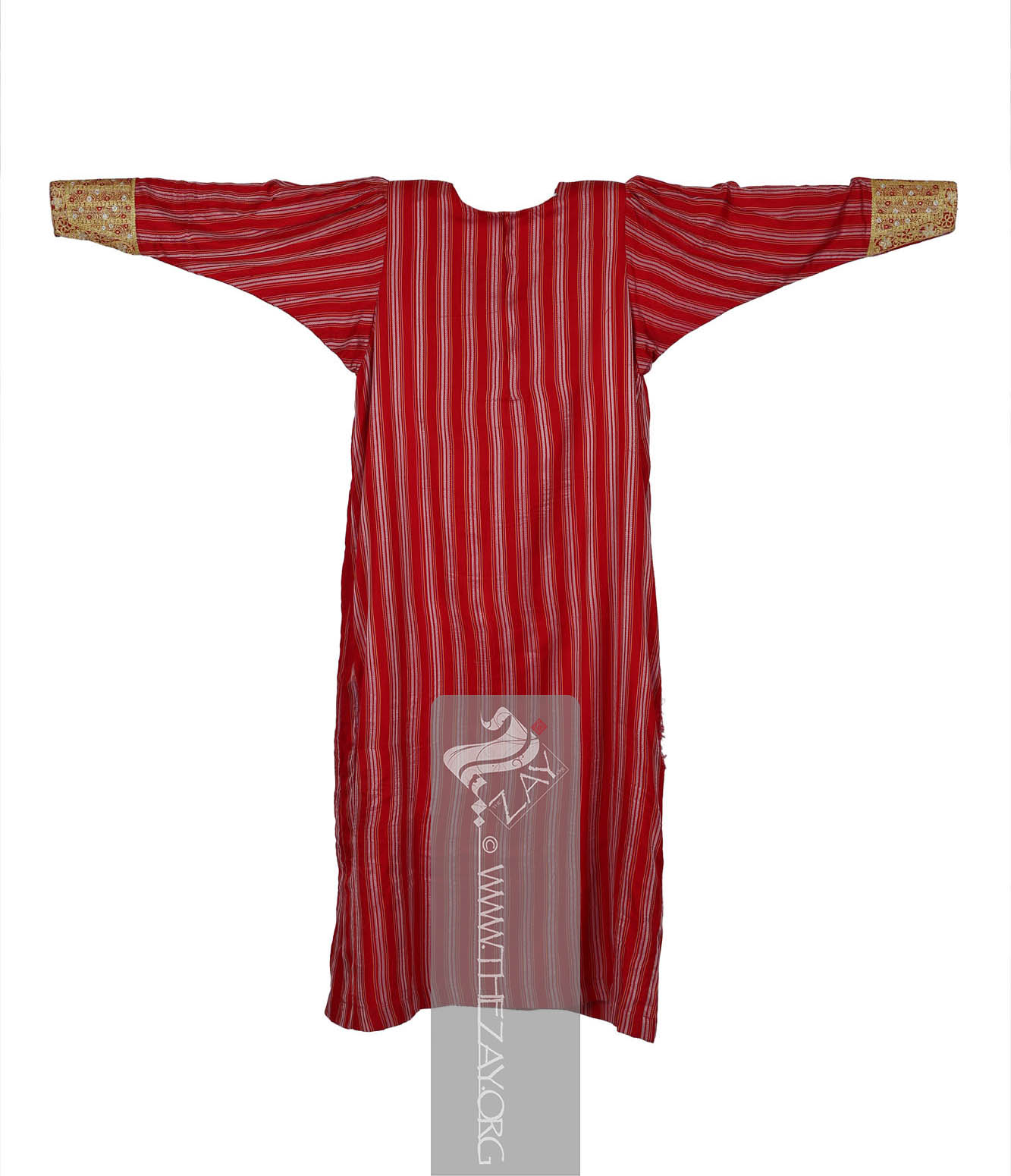


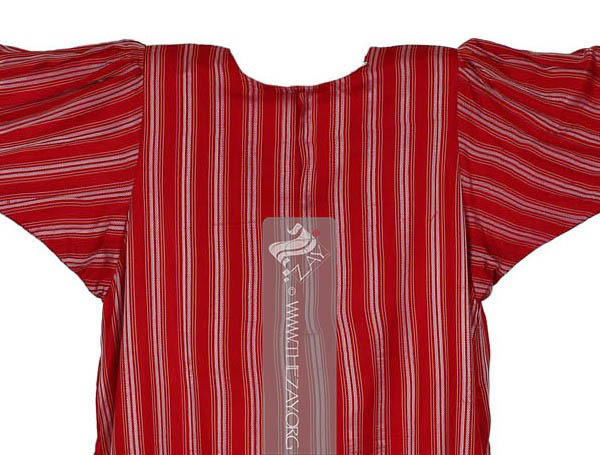
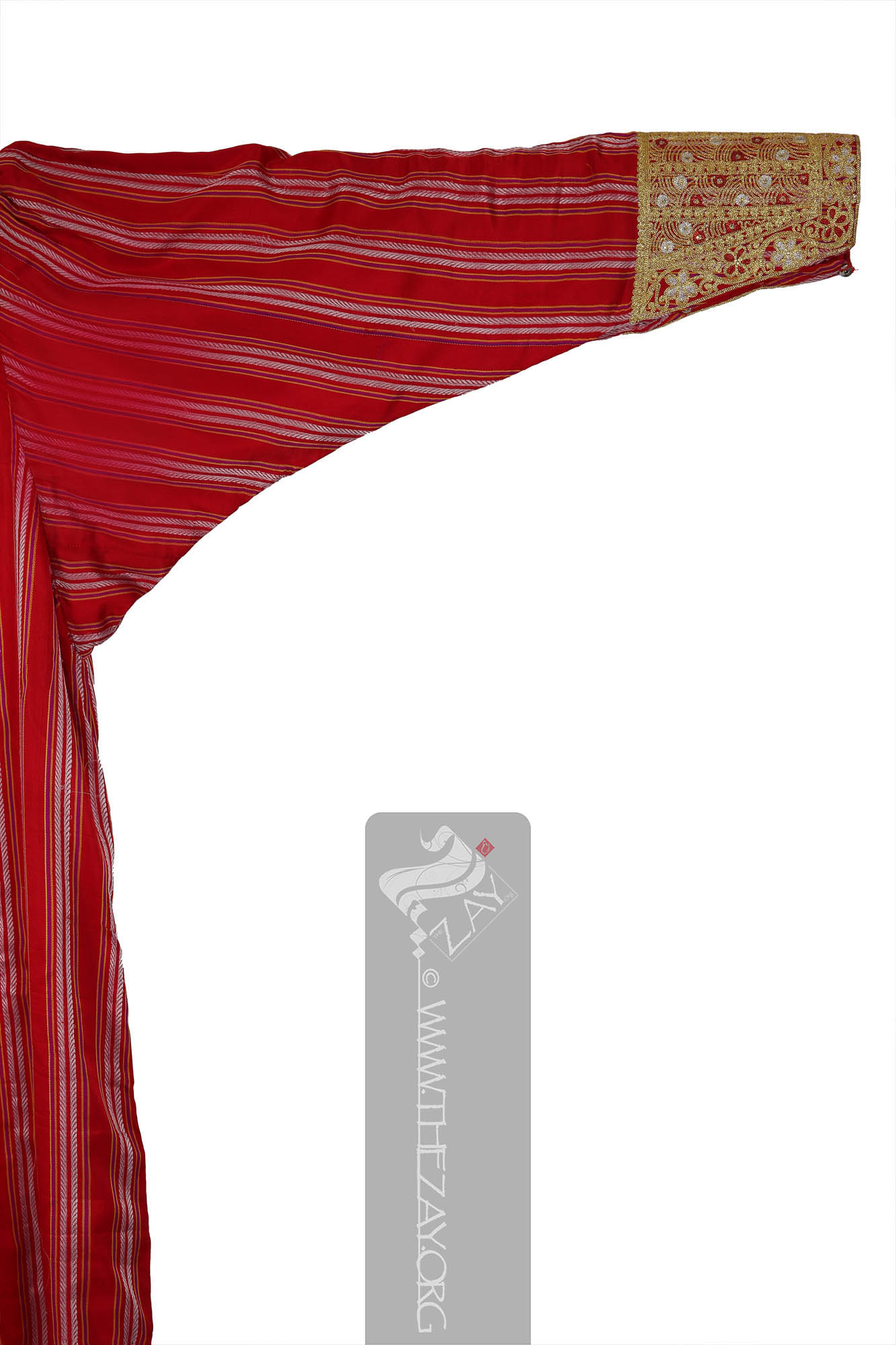

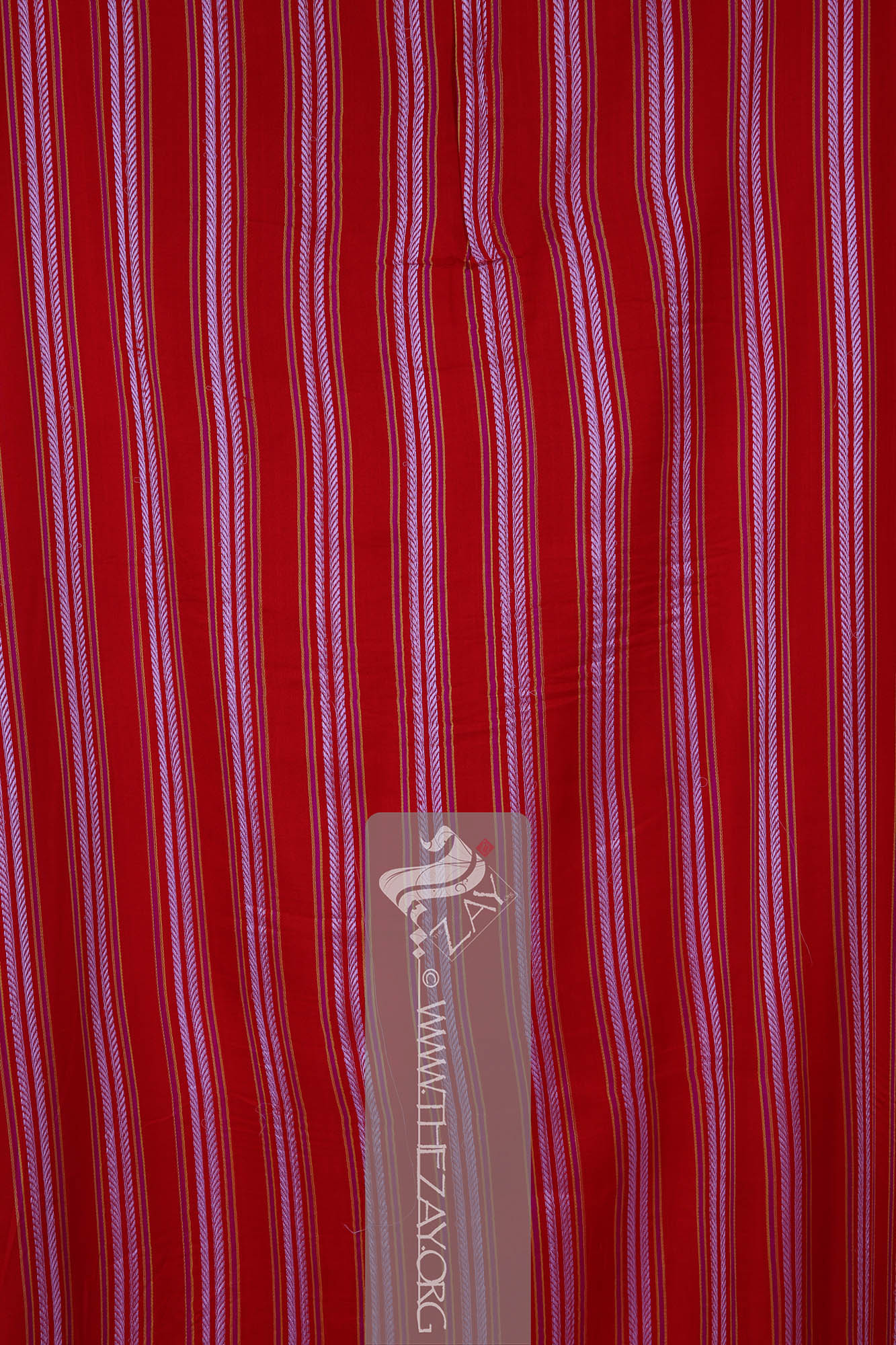
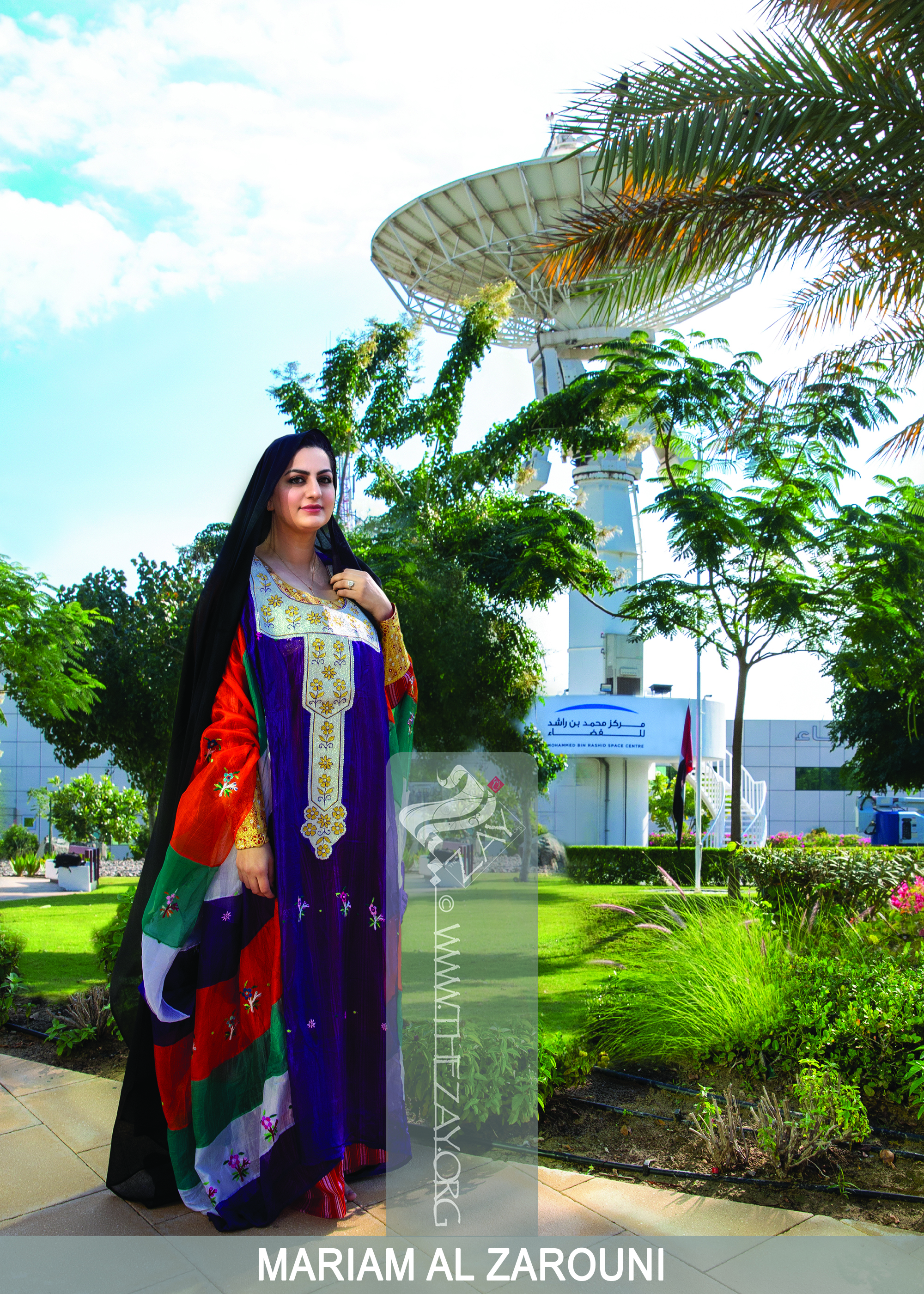
| Local Name | Kandurah_arabiyah bu_nsaiah, khwar_zari |
| Object Category | Tunic dress |
| Gender | Female |
| Date of object | 2007 |
| Place Of orgin | United Arab Emirates |
| Region | Abu Dhabi |
| Object Range | Oman, United Arab Emirates |
| Dimensions | Length: 153 cm Width: 165 cm |
| Materials | Silk |
| Technique | Machine Embroidered Machine Stitched |
| Color | |
| Motif | Arabesque Floral |
| Provenance | Donated, Mira Ahmed Hamdan, Um Sa’id, Abu Dhabi 2007 |
| Location | The Zay Zay: (Arabic: costume, Pl. azyaā’), a set of clothes in a style typical of a particular country or historical period. Initiative |
| Status | In storage |
| ZI number | ZI2007.50039 UAE |
Ṭariq: (Arabic; Synonym: tulle_bi_talli; talli; badla; khus_dozi ), series of small metal knots made on a woven net ground as embellishment. The term is commonly used in the Levant Arab region specifically in Lebanon.
El Mutwalli Dr. Reem TariqṬariq: (Arabic; Synonym: tulle_bi_talli; talli; badla; khus_dozi ), series of small metal knots made on a woven net ground as embellishment. The term is commonly used in the Levant Arab region specifically in Lebanon.
el Mutwallī: Founder (CEO) of the Zay Zay: (Arabic: costume, Pl. azyaā’), a set of clothes in a style typical of a particular country or historical period. Initiative, a public figure, speaker and author. An expert curator and consultant in Islamic art and architecture, interior design, historic costume, and UAE heritage., Mira Ahmed Hamdan, Um ‘Um: (Arabic: mother), a sign of respect or formality, women are not addressed by their own names, rather as mother of, then adding the name of the eldest son as in Um Mohammed. Also can mean: with, for example (‘um mishakhiṣ) meaning with gold embellishment. Sa’id, contacted her in 2018. Mira was a fan of the work carried out by The Zay Zay: (Arabic: costume, Pl. azyaā’), a set of clothes in a style typical of a particular country or historical period. Initiative and wished to donate a garment to the Collection.Salwar: (Farsi: shalvār; Synonym: ṣarwāl, shirwāl ), trousers featuring tapering ankles and drawstring closure of Central Asian origin. They disseminated in the Indian subcontinent between c.1st-3rd century BCE. Although exact period of its arrival in the Arab world is disputed their widespread adoption is confirmed from the 12th century.
, churidars, or pyjama. In Hijazi dialect, the term refers to a sleeved, waist-cinched dress that comes in different styles, popularly worn since the 1950s.). a sleeveless shirt of varying length, typically falling either just above or somewhere below the knees of the wearer, with its side-seams left open at the bottom.. Its defining feature is the vertical slit (shaj Shaj: (Arabic: shaq), meaning 'a rip or tear’ and refers to the opening at the neckline of a garment, also known as (jayīb). The letter (qaf) is turned (jīm) in many colloquial Arab dialects.) on the left side of the neckline (halj Ḥalj: (Arabic: ḥalq: mouth, pl: ḥlūj,). Colloquially, the term refers to the neckline opening. The letter (qāf) is turned (jīm) in many Arab dialects.) that extends down the chest. That functioned as a means to enlarge the fitted neckline opening (halj Ḥalj: (Arabic: ḥalq: mouth, pl: ḥlūj,). Colloquially, the term refers to the neckline opening. The letter (qāf) is turned (jīm) in many Arab dialects.) and allow the head to pass through, which is then closed and opened by means of cotton buttons (igmah) or snaps (siq_w_biq Siq_w_biq: (Colloquial Arabic), metallic snap studs used to fasten clothing. The term in an onomatopoeia representing the sound that the snaps make when opening and snapping shut.).Salwar: (Farsi: shalvār; Synonym: ṣarwāl, shirwāl ), trousers featuring tapering ankles and drawstring closure of Central Asian origin. They disseminated in the Indian subcontinent between c.1st-3rd century BCE. Although exact period of its arrival in the Arab world is disputed their widespread adoption is confirmed from the 12th century.
, Ṣarwāl, sharwāl, salbāl, khalag), pair of trousers with tapering ankles and fastened with a draw string. Believed to have originated in Central Asia it has spread since in the Indian subcontinent between c. 1st – 3rd century BCE and the Middle East from c. 12th century. ) around the waist. Also known as (ribqah Ribqah: (Arabic: noose, pl. ribaq), colloquially in Saudi Arabia, it refers to the cotton cord used to fasten the waistline on underpants (sirwal Sirwāl: (Farsi: shalvār; Synonym: SalwarSalwar: (Farsi: shalvār; Synonym: ṣarwāl, shirwāl ), trousers featuring tapering ankles and drawstring closure of Central Asian origin. They disseminated in the Indian subcontinent between c.1st-3rd century BCE. Although exact period of its arrival in the Arab world is disputed their widespread adoption is confirmed from the 12th century.
, Ṣarwāl, sharwāl, salbāl, khalag), pair of trousers with tapering ankles and fastened with a draw string. Believed to have originated in Central Asia it has spread since in the Indian subcontinent between c. 1st – 3rd century BCE and the Middle East from c. 12th century. ). Also known as (dikka), or (nis’ah).), or (dikkah Dikkah: (Arabic: belt), a drawstring or cotton cord used to fasten the waistline on underpants (sirwal Sirwāl: (Farsi: shalvār; Synonym: SalwarSalwar: (Farsi: shalvār; Synonym: ṣarwāl, shirwāl ), trousers featuring tapering ankles and drawstring closure of Central Asian origin. They disseminated in the Indian subcontinent between c.1st-3rd century BCE. Although exact period of its arrival in the Arab world is disputed their widespread adoption is confirmed from the 12th century.
, Ṣarwāl, sharwāl, salbāl, khalag), pair of trousers with tapering ankles and fastened with a draw string. Believed to have originated in Central Asia it has spread since in the Indian subcontinent between c. 1st – 3rd century BCE and the Middle East from c. 12th century. ). Also known as (ribqah Ribqah: (Arabic: noose, pl. ribaq), colloquially in Saudi Arabia, it refers to the cotton cord used to fasten the waistline on underpants (sirwal Sirwāl: (Farsi: shalvār; Synonym: SalwarSalwar: (Farsi: shalvār; Synonym: ṣarwāl, shirwāl ), trousers featuring tapering ankles and drawstring closure of Central Asian origin. They disseminated in the Indian subcontinent between c.1st-3rd century BCE. Although exact period of its arrival in the Arab world is disputed their widespread adoption is confirmed from the 12th century.
, Ṣarwāl, sharwāl, salbāl, khalag), pair of trousers with tapering ankles and fastened with a draw string. Believed to have originated in Central Asia it has spread since in the Indian subcontinent between c. 1st – 3rd century BCE and the Middle East from c. 12th century. ). Also known as (dikka), or (nis’ah).), or (nis’ah).). The term is also used to denote any chevron motif.: belt), A woven cotton or wool spun flat cord, used to gather and fasten underpants on waist. Also used to denote any chevron motif.). It is wider than average and as such does not require a gusset (bat Bāṭ: (Arabic: underarm/armpit, pl. bītān, synonym: ibt, tkhrāṣah, tnfāyah/tnfājah), gusset, a triangular or rhomboidal piece of fabric inserted into the seam to add breadth or reduce stress from tight-fitting clothing. Used for underarms on tunic dresses, side sleeve panels on overgarments (thāwb), and undergarments (ṣarāwl). ). The sleeves are also relatively wide and are fastened at the wrists with metal snaps (siq_w_biq Siq_w_biq: (Colloquial Arabic), metallic snap studs used to fasten clothing. The term in an onomatopoeia representing the sound that the snaps make when opening and snapping shut.). The embroidery on both the neckline and sleeve cuffs (hyul Ḥyūl: (Arabic: hjūl: to walk or jump), colloquially in the Gulf region, the term refers to the hem of garment or its sleeves. In pronunciation, the (j) turns to (y). ) are in gold-coloured metallic thread (zari Zarī: (Persian two-syllables: zar: gold & dozi: embellishment), complex embroidery technique that uses metal alloy on silk, satin, or velvet, and may include pearls, beads, and precious stones. Colloquially in the Arab gulf region, the term (zarī) is loosely applied to any gilded thread, embellishment or gilded brocade fabric. Originated in ancient Persia it has been used extensively in Indian and Middle Eastern textiles for centuries. ) with intricate floral and arabesque motifs, and iron-on crystals for an added bling.